Step inside these 8 immersive installations seen at Dubai Design Week 2023
Creatives from across the globe were brought together to demonstrate the power of imagination and innovation in the field of design through breathtaking installations.

A key feature – every year Dubai Design Week includes a diverse range of immersive installations that captivate and inspire visitors. Bringing together designers, architects, brands and creatives from across the globe it demonstrates the power of imagination and innovation in the field of design.
Staged across Dubai Design District (d3) during the six-day festival was a curated range of outdoor installations and interventions transforming public spaces into immersive experiences.
This year’s Dubai Design Week featured over 32 installations with a focus on how design, science and technology can converge to reclaim materials of our past, as well as reimagined new forms that foster sustainable practices.
From Of Palm to Pulp Fractions, Arabi-An, Altostrata, Designest, The North Star, The Sustainability Dome and The Future Will Be Sown – come explore these eclectic but one-of-a-kind installations!
Dubai Design Week 2023 – 8 immersive installations:
Of Palm by Abdalla Almula
Having spent the majority of his years in the UAE, where the vast desert landscape is home to a myriad of plant and animal species – Abdalla Almulla drew deep inspiration from the indigenous Palm tree for the Abwab pavilion of this year. Abdalla’s vision for the pavilion was to exemplify how the palm tree, abundantly found in the local environment, can serve multifaceted needs of the community. Beyond its aesthetic and ecological significance, he aims to showcase how this remarkable tree can provide sustenance, offer shelter, yield various products, and even serve as a source of fuel.
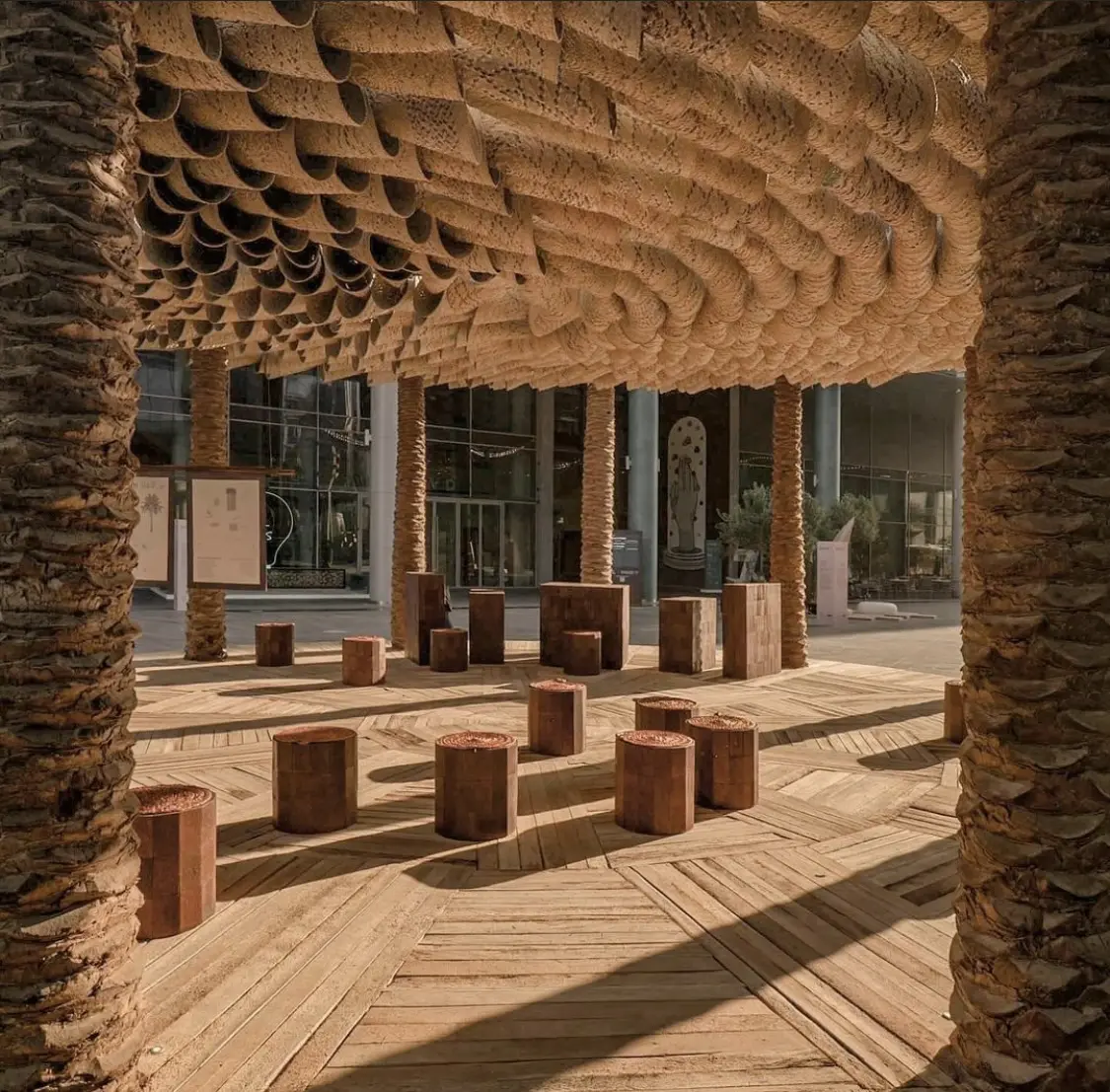
The entire pavilion, from its structural components to its interior design and the showcased products was meticulously crafted from the versatile palm tree. This holistic approach not only emphasized the tree’s inherent value but also served as a powerful statement of sustainable design and resourcefulness. Abdalla’s project encapsulates the essence of harmonizing natural elements with innovative architectural concepts, fostering a deeper connection between the environment and human ingenuity.
2. Pulp Fractions by Tee Vee Eff
With packaging making up more than one-third of our waste, in part due to the increase of consumerism in recent years, Dubai-based architecture and interior design atelier Tee Vee Eff attempted to salvage discarded waste – particularly from delivery boxes and paper bags – through their installation Pulp Fractions.
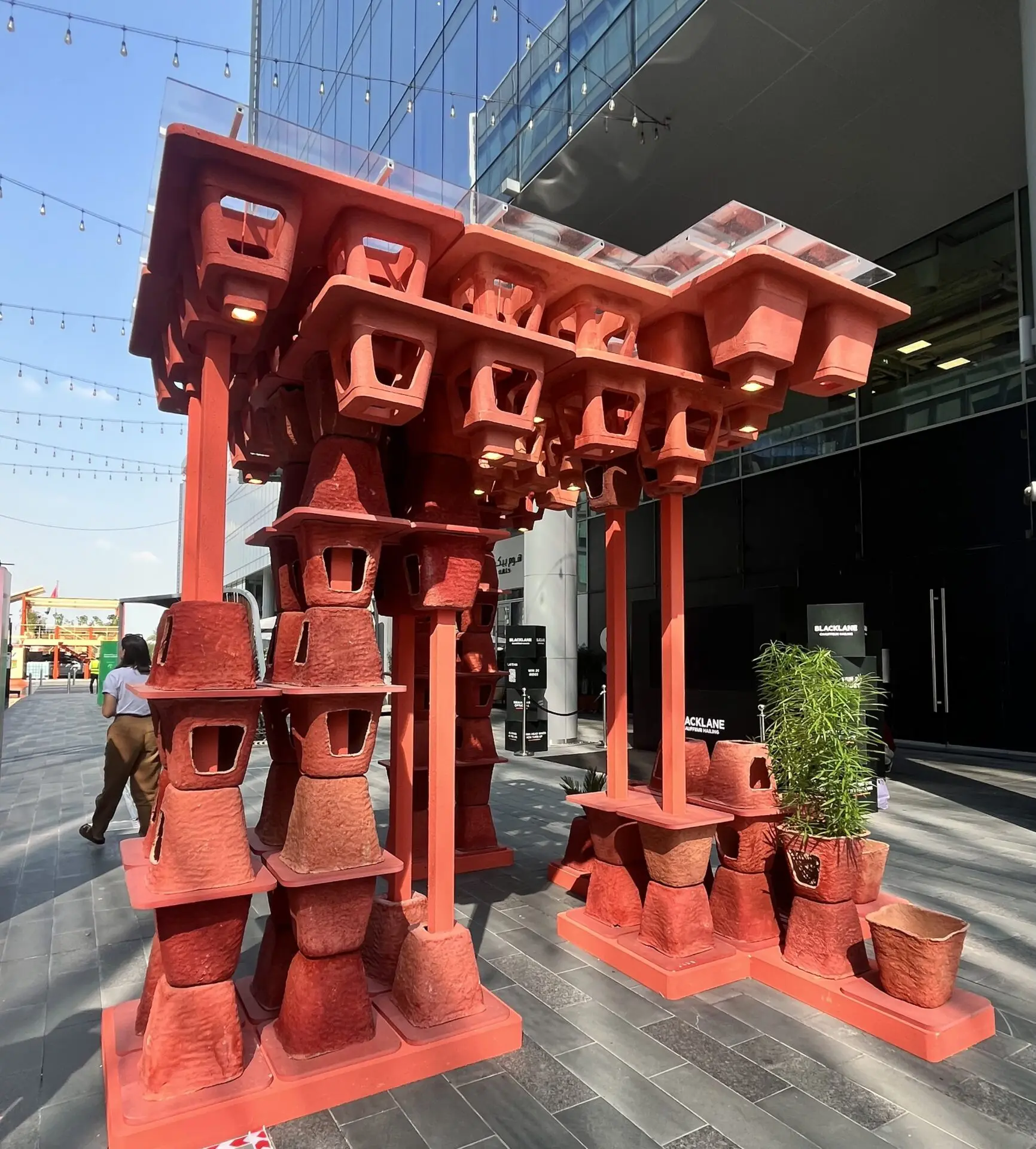
Waste cardboard and paper can be processed into a durable and lightweight material when pressed and dried. Tee Vee Eff made use of this paper pulp as the primary material of Pulp Fractions, poured into a custom mold and dry pressed to form stackable modules. The modules contain grooves, protrusions and extrusions that allow them to be stacked, thus a new sculptural form is created that is both symbolic in its message as well as functional, offering respite in the public realm.
Arabi-An by Mitsubishi Jisho Design
Arabi-an is the second iteration of Mitsubishi Jisho Design’s sustainable tea houses, or ‘an’ meaning ‘simple hut’ in Japanese. Constructed based on the Miura method of Origami, Arabi-an is made from localized food waste, such as tea dregs and grapes to construct its structures, with sustainability and circularity at its core.
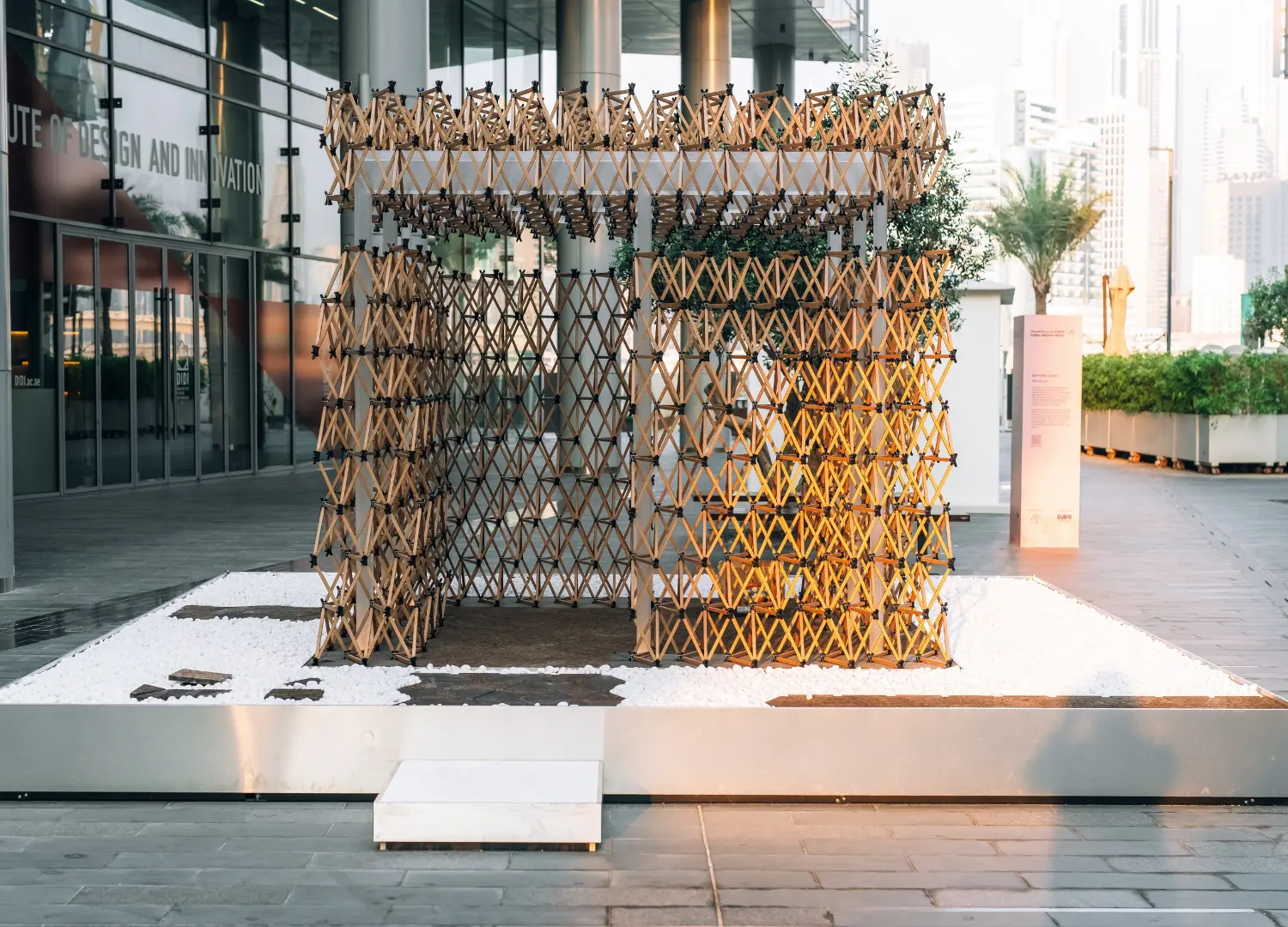
Arabi-an honored the art of tea as a symbol of human connection, fostering renewed intercultural dialogues in a world marked by divisions. A tea master was additionally present in Arabi-an at specific periods during Dubai Design Week to host tea ceremonies and encourage honest and intimate conversations with audiences.
Altostrata by Mamou Mani Architects x Fab.Pub
Altostrata – Therme Pavilion emerged as a remarkable convergence of sustainable design and pioneering technology, designed by French architect Arthur Mamou-Mani and crafted utilizing cutting-edge 3D printing technology by Fab.Pub.
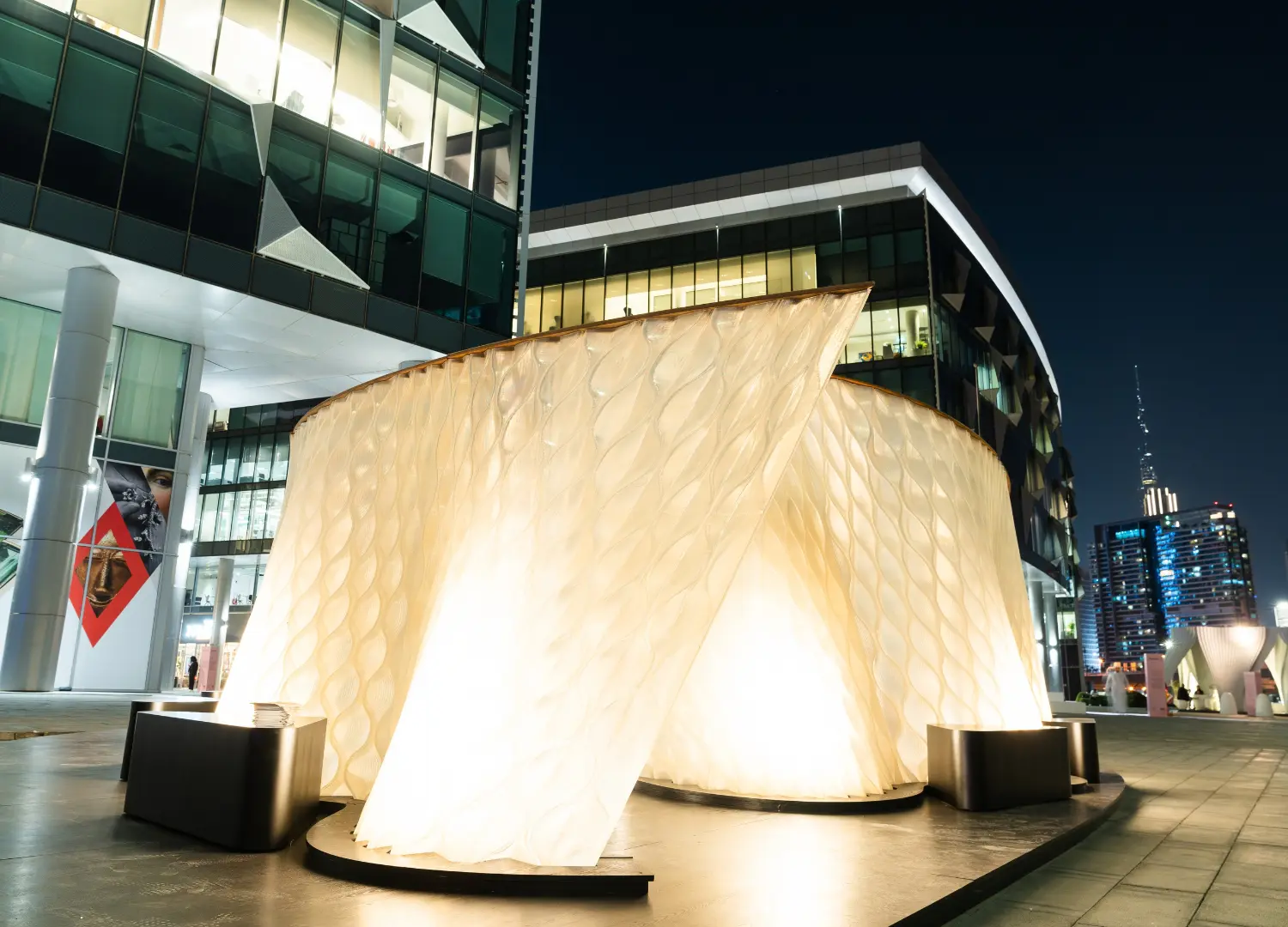
This architectural pavilion was brought to life utilizing biodegradable, sugar-based PLA, a revolutionary material that promises to reshape the way we approach construction; and its panels were built in a manner that minimized waste, reduced resource consumption and offered a flexible design that could be effortlessly reconfigured and transported, allowing for new forms and functionalities beyond its current purpose.
Designest by Ahmad Alkattan
Designest, conceived by architect Ahmad Alkattan, was a fusion of minimalistic design and advanced construction techniques, poised to redefine the district’s identity. Designers crave spaces where they can gather, exchange ideas, and foster micro-communities. Designest provided such a place, offering shade, seating areas, and shelter for both humans and non-human inhabitants. It striked a balance between privacy and openness, spaciousness and coziness, embodying both iconic and inclusive qualities.
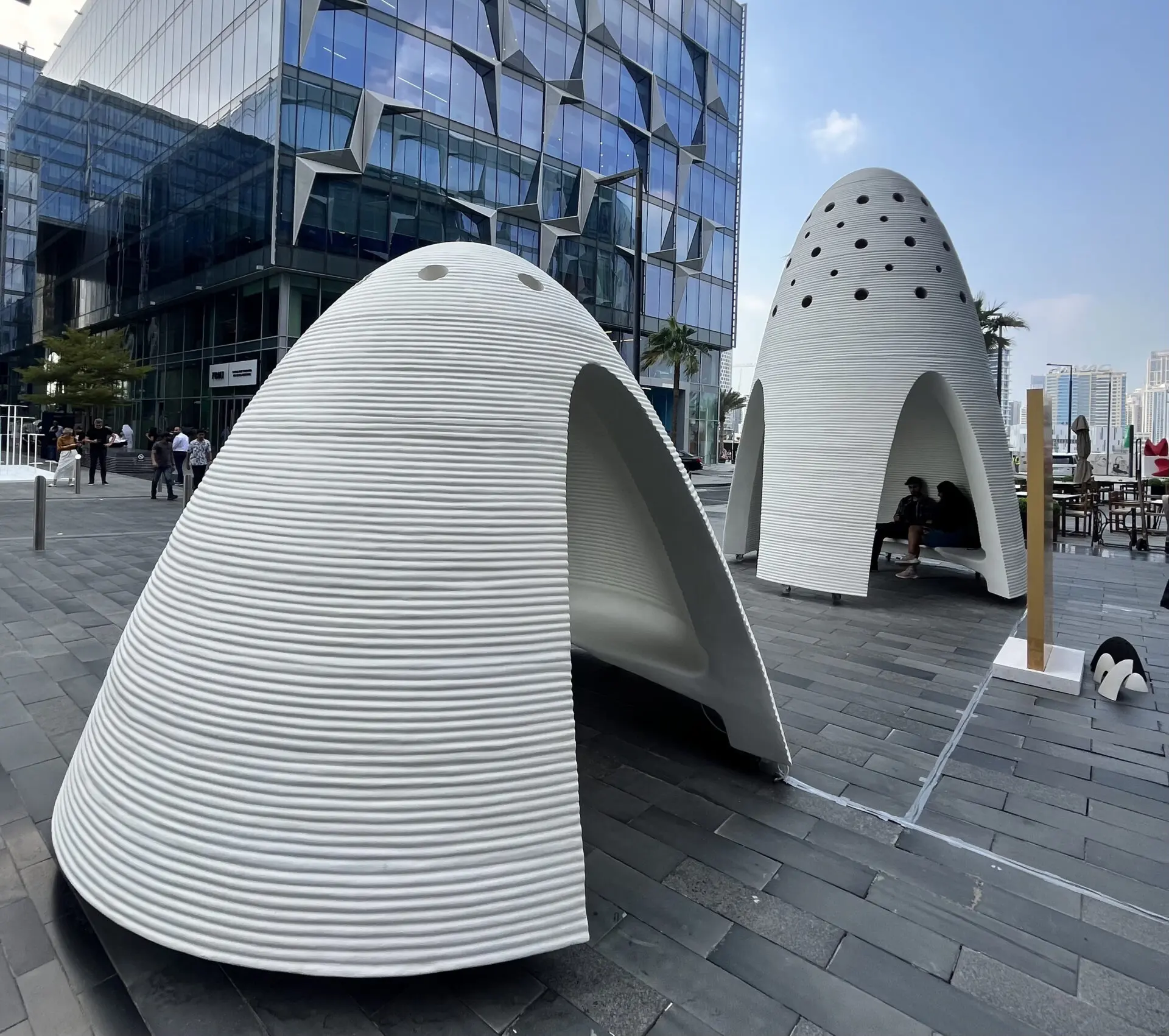
Inspired by the historical significance of pigeon towers in the Arabian Peninsula, Designest further paid homage to this cultural heritage. It represented the ultimate contrast in Dubai Design District, blending a traditional identity with cutting-edge construction technology. The unique structures were 3D-printed using recycled reinforced GRC (Glass Reinforced Concrete). Even the pigeon nests were crafted from reused toilet and kitchen paper rolls, with the collected fertilizers benefiting district plants. Designest wasn’t just neutral; it boasted a positive environmental footprint, adding productivity to its list of attributes.
The North Star by in5
Designed by Dubai-based Nyxo Visionary Design for the start-up incubator in5, the stunning 4.2 meters high pavilion stood as a testament to the innovative fusion of technology and design.
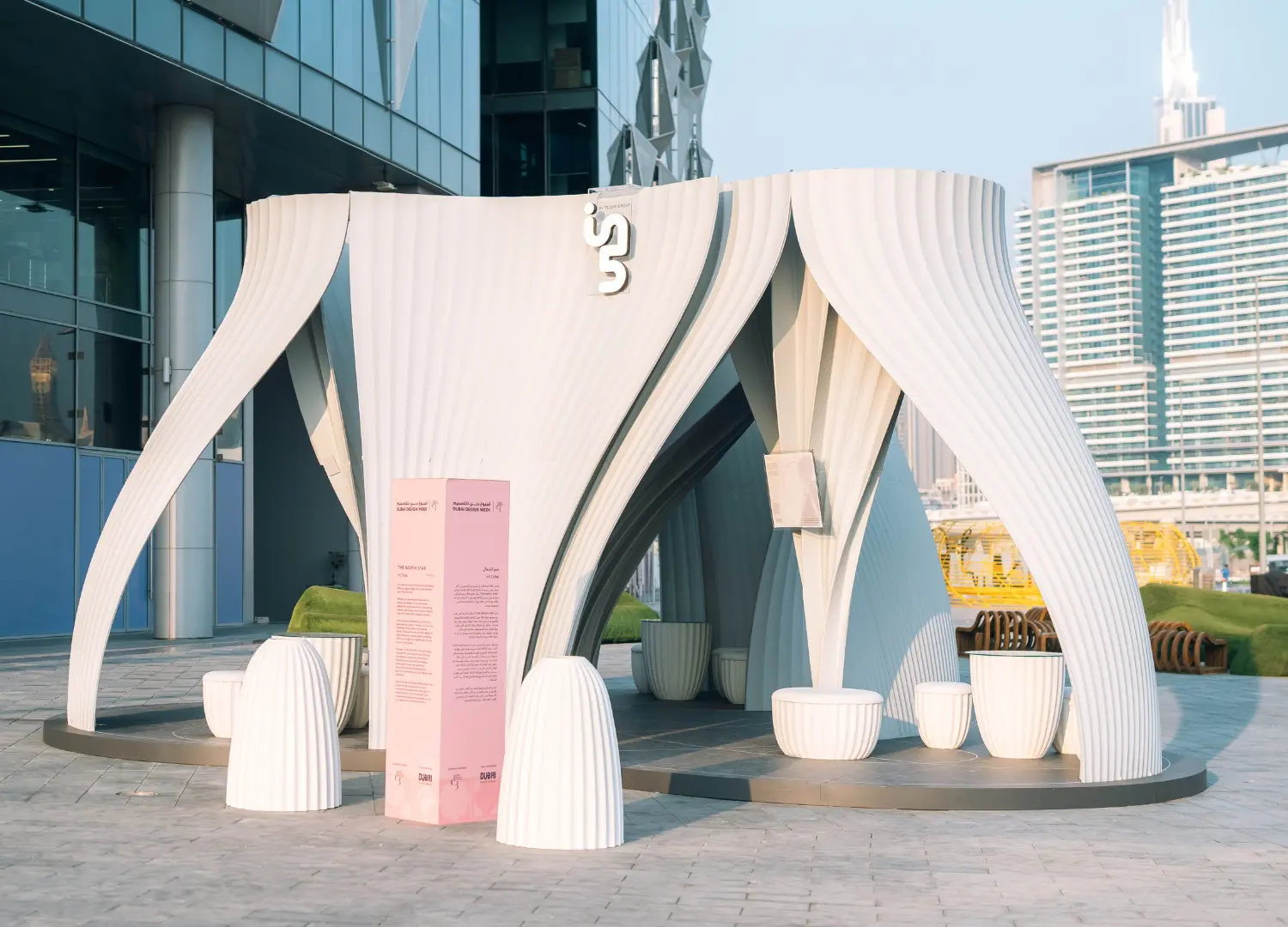
The design intricately weaves together a series of S-shaped curves that pay homage to the ogee arches found in Islamic architecture, creating fluid openings and connections within the pavilion. The surfaces of the pavilion, constructed through large-scale thermoplastic 3D printing, symbolize the collaborative and adaptive nature of in5 – showcasing the convergence of different disciplines.
The Sustainability Dome by 3Distica
The Sustainability Dome by 3Distica derived its name from its distinctive dome structure. This concept was brought to life using a combination of repurposed high-density polyethylene (HDPE) beams, sheets, and 3D printed components crafted from biodegradable materials.
It was held together with ropes fashioned from reclaimed fabric. The materials used to create the dome ranged from plastic (HDPE) water bottle collection points, plastic (HDPE) water bottle shredding machines, shredded plastic (HDPE) water bottles injection molding machines, shredded plastic (HDPE) water bottles sheet pressing machines, to biodegradable (PLA+) FDM 3D printing and recycled fabric ropes.
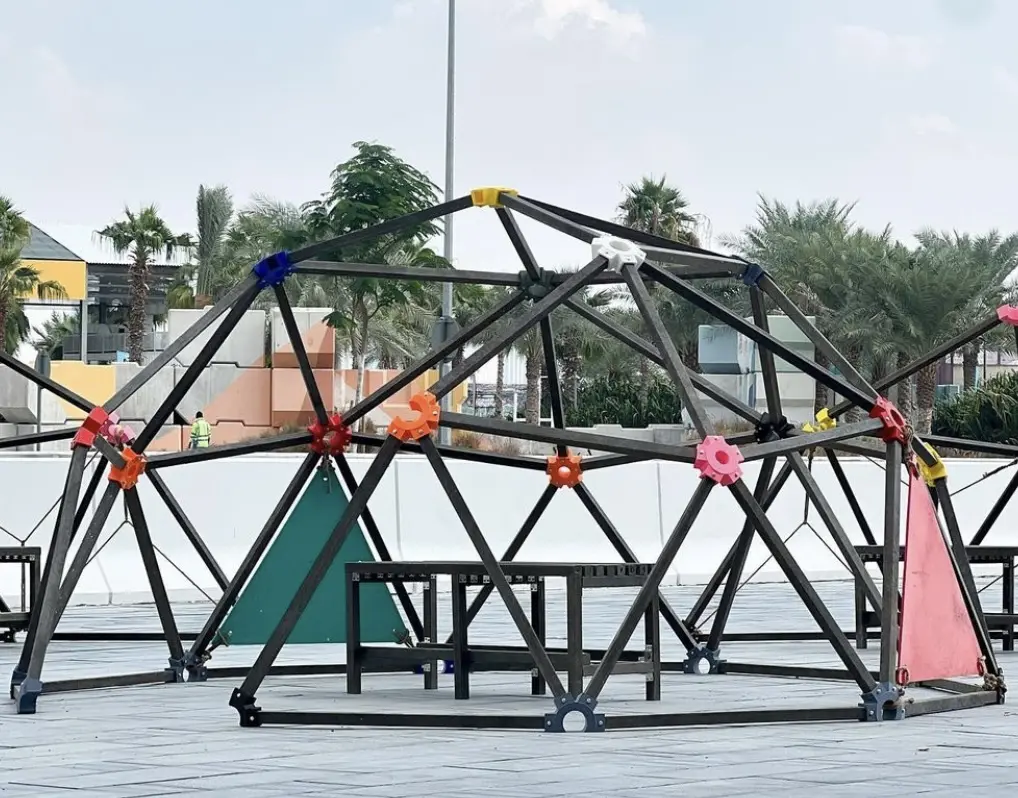
The utilization of recycled HDPE and PLA showcased the partnership of environmental conscientiousness and engineering innovation, setting a precedent for straightforward, sustainable, and customizable manufacturing techniques in the future.
The Future Will Be Sown by Made In Earth
At the heart of The Future Will Be Sown by Made In Earth was an immersive and sensorial landscape, simultaneously bold and serene. The audience was invited to uncover the transformative power when the materials we harvest, the communities we know, and the stories that tie our region, come together.
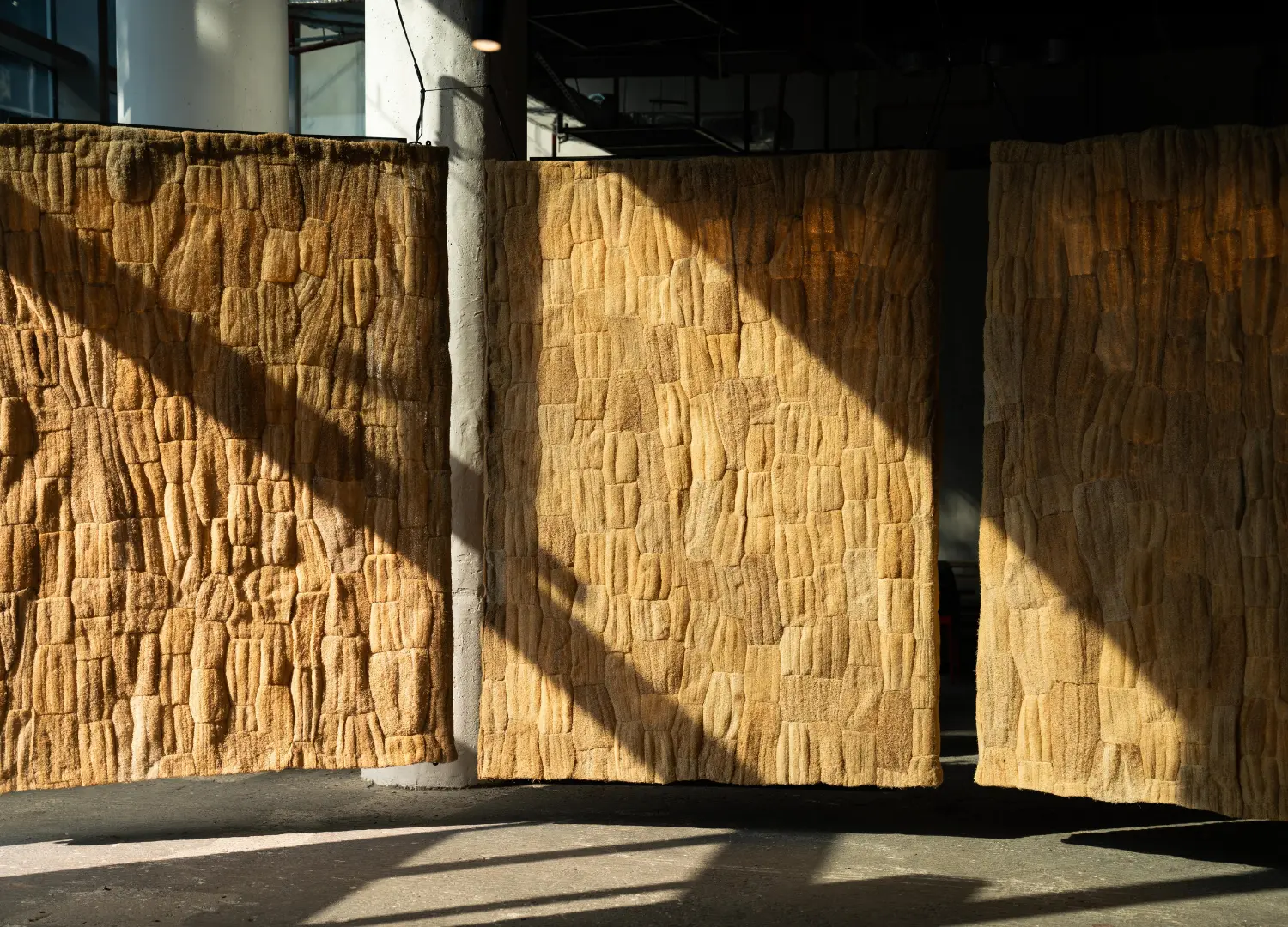
The installation was an invitation to reflect on the idea of sowing, as an act of thinking ahead, cultivating meaningful relationships with one’s land and people. An invitation to reimagine the world in symbiosis with plant fibers. It was a provoking proposition for all: let us sow, before we build. Our future calls for regenerative growth, and climate positive action. They can undeniably be sown, and collectively so, one seed, one stitch and one story at a time.








